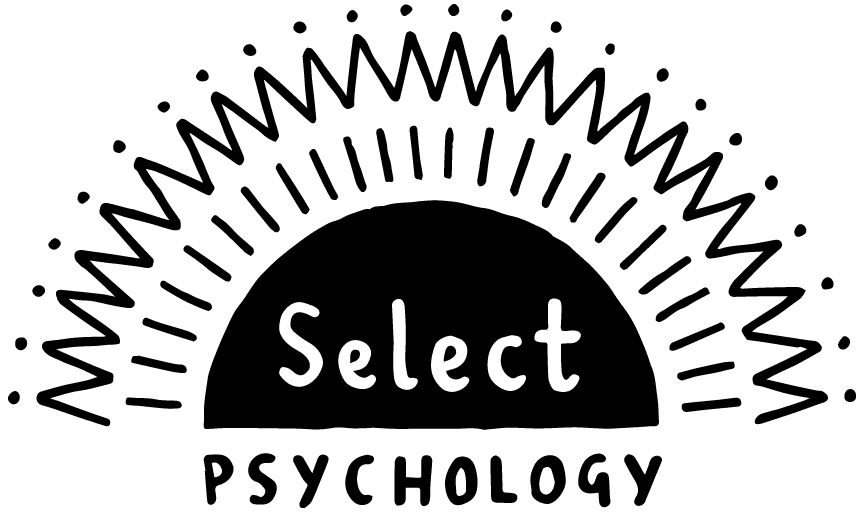Ethical Non-Monogamy (ENM) or Consensual Non-Monogamy (CNM) relationships seem to be gaining a lot of popularity. With more and more people getting interested in learning about it and open to trying it, the stigma around having an ENM relationship is slowly fading away.
If you are curious to learn more about ENM relationships we’ve got you covered! In this blog, we will explore:
- The meaning of ENM relationships
- What’s ENM in Dating
- Core Principles of ENM Relationships
- Types of ENM Relationship
- Myths about having ENM Relationships
- Practicing ENM Relationships
What are ENM Relationships?
The simplest way to understand ENM (Ethical Non-Monogamous) relationships is to view them as an openly and consensually intimate relationship or partnership with/between multiple people.
ENM relationships primarily embrace the idea that it is possible to have fulfilling, loving relationships with multiple people. With the condition that all individuals involved are informed, willing, respectful of one another’s boundaries and preferences.
It is not necessary for a person practicing ENM to have partners who are also in an ENM relationship. It can be mutually decided or one-sided. For example, if a person is in a polyamorous relationship with two individuals, it is not necessary that those two individuals would also be in a relationship. Whether with each other or anyone else on the outside. This type of relationship is a one-sided ENM relationship.

What’s ENM in Dating?
Ethical Non-Monogamy (ENM) in dating means being in romantic or sexual relationships with multiple partners at the same time, with the knowledge and consent of everyone involved. Dating ENM focuses on open communication, honesty, and respect, ensuring all parties are aware and comfortable with the arrangement. ENM in dating includes forms like polyamory, where people have multiple romantic partners, and open relationships, where partners can have outside connections. Swinging, which involves sexual experiences with others, is also part of ENM. The key to dating ENM is that all relationships are consensual and transparent, respecting everyone’s needs and boundaries.
Core Principles of ENM Relationships
People who choose to practice ENM relationships tend to do so with a lot of self-awareness and emotional security where their emotions are not impacted by the choices of their partner and vice-versa. Central to the smooth functioning of an ENM relationship is consent, communication transparency and respect, but this alone is not enough, let’s explore all core principles that guide this type of relationship:
1. Consent
Consent is crucial in ENM. Everyone involved must agree to the relationship structure and activities. This means all parties are fully aware of and comfortable with the arrangement.
2. Communication
If you have decided to practice ENM, it is important to bear in mind that this will involve extensive communication to help you and your partner(s) navigate complex emotions, challenges and changes.
3. Transparency
Clear expression of one’s intentions, feelings and interactions helps maintain trust and understanding between partners. Being transparent about your preferences and expectations from your partners creates an open space for true communication and expression to flourish.
4. Respect
As in a monogamous relationship, in an ENM relationship treating all the partners and their choices with respect and consideration is crucial for maintaining healthy relationships.
5. Boundaries
Fundamental to ENM is the creation, acceptance and respect of boundaries. This enables people to know each other’s comfort levels and limits. Boundaries help you and partner(s) agree on what you want and don’t want.
6. Honesty
Honesty builds trust. This means being truthful about one’s feelings, desires, and actions, even when it’s difficult. Honest conversations are necessary to maintain the integrity of the relationship.
7. Equality
Equality means valuing all relationships within the ENM structure. There should be no inherent hierarchy unless all parties explicitly agree on it. Each relationship deserves attention and respect.
8. Compersion
Compersion may not be a well-known concept, but that doesn’t make it any less important. Simply put, compersion is the opposite of jealousy. In the context of ENM, it means to feel pure and empathetic joy, happiness and even excitement when your partner experiences happiness, pleasure or love with another person. Compersion usually signifies a high level of emotional security and openness and hence, is highly valuable when practicing ENM relationships.
9. Autonomy
Each person maintains their independence and the right to make their own choices. This supports individual growth and ensures no one feels controlled or restricted.
10. Mutual Benefit
ENM relationships should benefit everyone involved. This means meeting each person’s needs and ensuring the relationship structure contributes positively to their lives.
Types of ENM Relationship
Relationships can seem complicated on the outside and fully comprehensible only to the people in them. When it comes to defining what ENM relationships consist of, it is best to understand ENM as an umbrella term for many types of relationships. Some of these include:
Polyamory
Polyamory involves having multiple physical, emotional or multiple romantic relationships at the same time, with consent of everyone involved. These relationships can vary in commitment and intensity, depending on the emotional connection. These relationships can be structured in different ways:
- Hierarchical Polyamory: There are primary, secondary, and sometimes tertiary partners, with the primary relationship often taking precedence.
- Non-Hierarchical Polyamory: All relationships are considered equal, with no ranking system.
Polyamorous relationships may also be in the form of quads and triads. Triads involves 3 individuals and quads involves 4 people in a relationship. This type of relationship can take on various forms, whether it is that all the people are romantically connected or that some are more connected than the rest.
Open Relationships
This relationship is when two individuals in a committed relationship agree to see people outside of the relationship. The connections they form outside the relationship are usually casual, not emotionally intense or serious. In an open relationship, setting ground rules protects and helps maintain the primary relationship. There are two common types of open relationships:
- Sexually Open Relationships: Partners can engage in sexual activities with others but maintain a primary romantic relationship.
- Romantically Open Relationships: Partners can form romantic attachments with others, in addition to their primary romantic relationship.
Relationship Anarchy
Refers to people who reject hierarchy in a relationship and instead value and prioritise the autonomy and agency of each individual. This approach encourages fluid and non-prescriptive relationships.
Monogamish
Refers to the type of relationship between two individuals who are monogamous but occasionally seek out non-monogamous experiences, usually with established rules or boundaries.
Polyfidelity
Polyfidelity involves a group of three or more people who are all romantically and/or sexually involved with each other exclusively. This group agrees not to have any outside partners, focusing on maintaining their closed network.
Swinging
When couples or individuals engage in sexual activities with other individuals or couples. It is generally focused on recreational sex and can take place at parties or similar occasions. The nature of this relationship may be recurrent but is not committal.
Casual Dating
In casual dating, individuals have multiple sexual or romantic partners without the expectation of exclusivity or a long-term commitment. This type of relationship is often less structured and more fluid, focusing on enjoying connections without deep emotional ties.
Solo Polyamory
Solo polyamory is when individuals engage in multiple relationships without seeking a primary partner or traditional coupledom. They prioritize their autonomy and independence, maintaining separate lives and households from their partners.

Myths About having an ENM Relationship
Two myths are most commonly associated with the topic of ENM relationships. The first is the belief that people in an ENM relationship do not experience jealousy because it’s their choice. However, this could not be more untrue.
Jealousy is a common and perfectly natural human emotion like happiness, sadness and something as basic as hunger. The only difference is that the intensity of jealousy might be less and something that can easily be worked out peacefully because there is more space for open communication.
The second and more rampant myth about ENM relationships is that they are often passed off as an excuse to cheat by the uninitiated. But there is a significant difference between the two. When participating in an ENM relationship, all the parties involved are fully aware and in agreement to the terms of the relationship. Whereas while cheating, a person in a committed relationship engages in a sexual or emotional attachment without the knowledge and agreement of their partner(s).
Ethical Non-Monogamous relationships offer more inclusivity, fluidity and flexibility. They place individual desires and needs at the centre rather than curbing them for the sake of traditional conventions.
Practicing an ENM Relationship
It is important to acknowledge and accept that ENM is not for everyone. Practicing ENM requires a high level of communication skills, emotional intelligence and self-awareness. More than that, it requires a genuine willingness to practice it—we all have our own choices! What works for one person or group of people, might not work for others.
ENM emphasises the importance of designing relationships that align with the needs and desires of the individuals involved, rather than adhering to societal norms. ENM reflects an evolution of conventionalities, personal exploration and human desire for diverse and fulfilling relationships.
Practicing ENM requires setting up boundaries and rules as the dynamics of these relationships can vary widely based on the individual relationship between individuals. Key ethics for practicing ENM include:
- Open and effective communication
- Mutual consent
- Trust
- Honesty
- Emotional security
- Empathy
- Respect of individuals’ needs and emotions
Final Thoughts
ENM (Ethical Non-Monogamy) is a relationship style that challenges traditional approaches to relationships and commitment. It is a more inclusive approach that allows individuals to engage in consensual and transparent relationships with multiple partners.
Fundamental to ENM is the belief that there is no one-size-fits-all approach to relationships because they are a personal experience for each individual. While ENM is a more evolutionary approach to relationships, it is not necessary that everyone would be interested in or comfortable with it.
The point of ENM relationships is not make monogamous relationships invalid but to merely provide an alternative to the conventional accepted forms of romantic relationships. As we become more self-aware and open, our needs, understandings and desires evolve with us. Over the years, ENM relationships have gained increasing recognition and acceptance as the society continues to evolve and we question traditional methods of doing things.
We hope this was helpful in understanding what ENM is and whether this is something you personally want to experience. Please remember that ENM is not a solution for fixing a relationship that has probably runs its course, but a lifestyle choice.
If your personal relationships are impacting your mental health and you think you could benefit from some professional help, don’t hesitate to get in touch with us.

